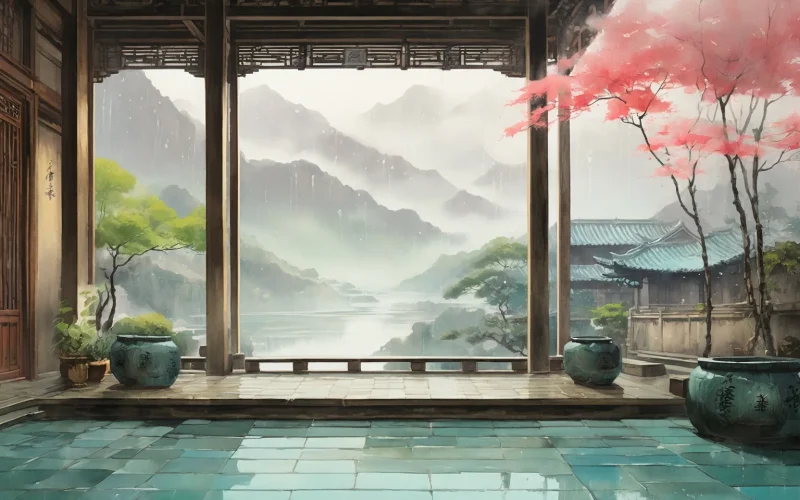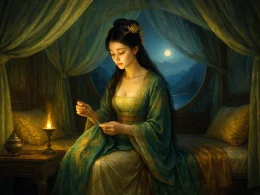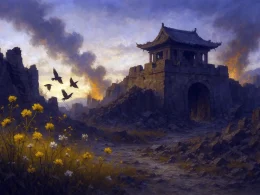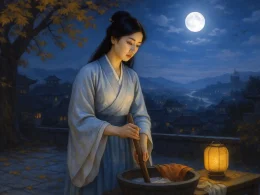Willow leaves twin with apricot blooms in hue,
Young streams emerge where sand gleams fresh and new.
Crossing the spring river—I glance behind,
To see fair cottages on the shore enshrined.
Original Poem
「二月一日晓渡太和江」
杨万里
绿杨接叶杏交花,嫩水新生尚露沙。
过了春江偶回首,隔江一片好人家。
Interpretation
Composed during the Qiandao era of Emperor Xiaozong of Song (c. 1165). While traveling, Yang Wanli crossed the Taihe River at dawn, encountering vibrant spring scenery: newly leafed willows, blossoming apricot trees, and freshly risen river waters. With keen perception, he captured the season’s exuberant vitality, transforming his observations into verse. The poem blends detailed close-ups with expansive vistas, exemplifying Yang’s gift for discovering poetry in fleeting moments of daily life.**
First Couplet: "绿杨接叶杏交花,嫩水新生尚露沙。"
Lǜ yáng jiē yè xìng jiāo huā, nèn shuǐ xīnshēng shàng lù shā.
Willows link their leaves, apricots interlace blossoms;
Tender waters, newly risen, still reveal sandbars.
This couplet depicts spring along the riverbank. Willow foliage forms a canopy, punctuated by apricot blooms—green and red interplaying with vibrant life. The river, just beginning to swell, has yet to fully submerge the sandbars, capturing spring’s nascent energy. Yang masterfully balances motion and stillness: the dynamic growth of willows and apricots contrasts with the static exposure of sandbars, together evoking organic vitality.
Second Couplet: "过了春江偶回首,隔江一片好人家。"
Guòle chūn jiāng ǒu huíshǒu, gé jiāng yīpiàn hǎo rénjiā.
Having crossed the spring river, I glance back by chance—
Beyond the stream, a stretch of wholesome dwellings.
Shifting from foreground to panorama, the poet turns unintentionally after crossing the river. The phrase "wholesome dwellings" (好人家 hǎo rénjiā)—simple yet warm—conjures an aura of tranquil contentment. The casual "glance back" (偶回首 ǒu huíshǒu) mirrors the traveler’s lighthearted mood.
Holistic Appreciation
The poem’s plain language belies its vivid imagery. The first couplet paints the riverbank in spring: willows, apricots, tender waters, and sandbars—their colors and textures harmonizing into a fresh, luminous scene. The second couplet, with its offhand "glance back," expands the view to distant homesteads, extending both vision and emotion. In this moment, the poet’s heart swells with quiet joy at human habitation nestled within nature’s beauty.
Artistic Merits
- Unadorned brushwork, lucid and lively: Eschewing ornate diction, Yang sketches spring with everyday vocabulary, achieving vividness through understatement—hallmark of his "plain yet flavorful" style.
- Integration of near and far: Close-ups of willows, blossoms, and sandbars yield to a panoramic view of dwellings, balancing detail with breadth, stillness with motion.
- Microcosm revealing macrocosm: A transient riverscape becomes a vessel for the poet’s affectionate embrace of life, reflecting his creed that "wherever the eye falls, poetry follows."
Insights
This poem reminds us that beauty resides in attentive observation of the commonplace. By framing a simple river crossing—willows greening, apricots blooming, waters rising, homes glimpsed—with poetic insight, Yang Wanli invites us to discover wonder in the ordinary and cherish life’s quiet vitality.
About the Poet
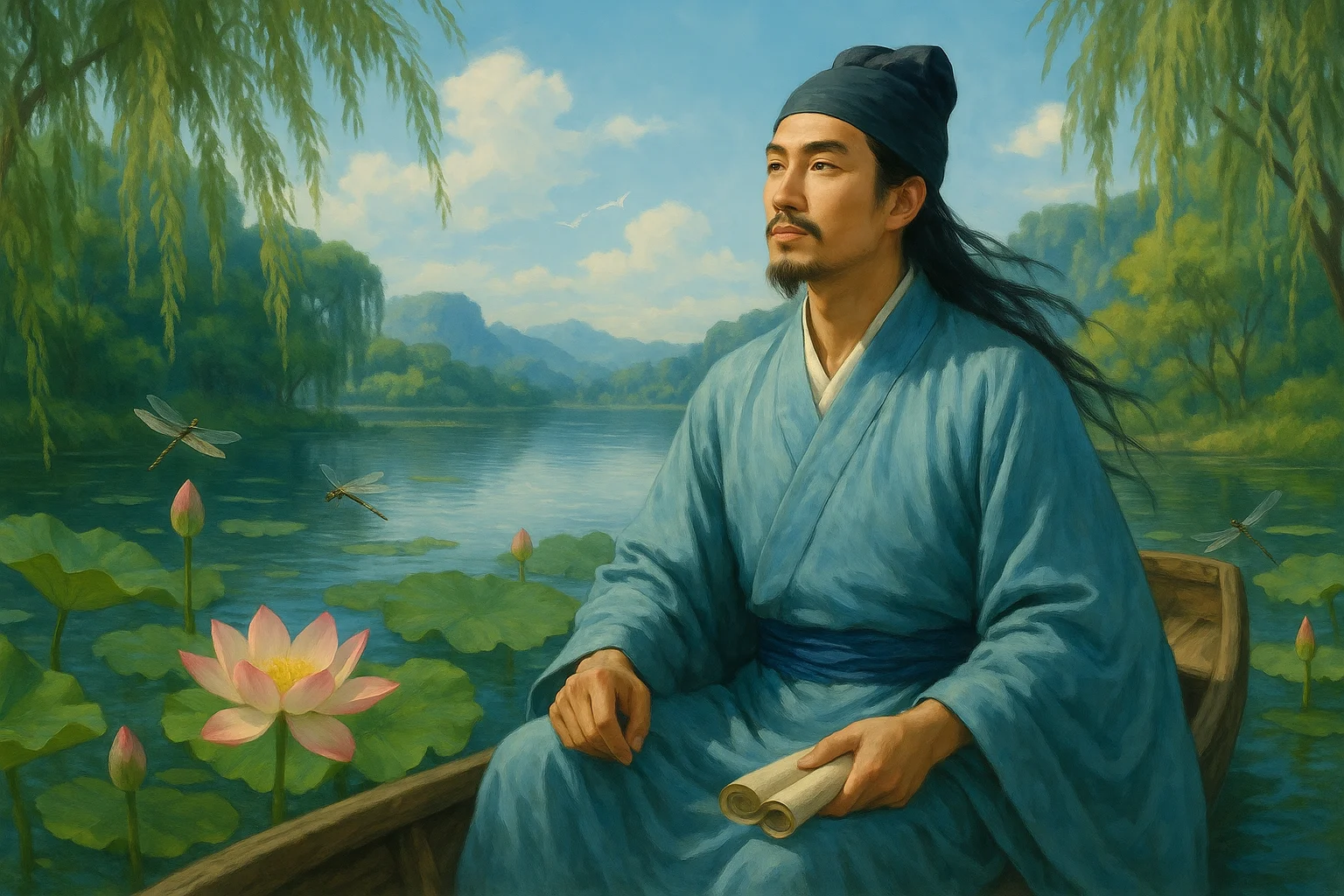
Yang Wanli (杨万里 1127 - 1206), a native of Jishui in Jiangxi, was a renowned poet of the Southern Song Dynasty, celebrated as one of the "Four Great Masters of the Restoration" alongside Lu You, Fan Chengda, and You Mao. He attained the jinshi degree in 1154 and rose to the position of Academician of the Baomo Pavilion. Breaking free from the constraints of the Jiangxi School of Poetry, he pioneered the lively and natural "Chengzhai Style," advocating for learning from nature and employing plain yet profound language. His poetry, often drawing inspiration from everyday life, profoundly influenced later schools of lyrical expression, particularly the Xingling (Spirit and Sensibility) School.







